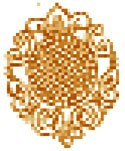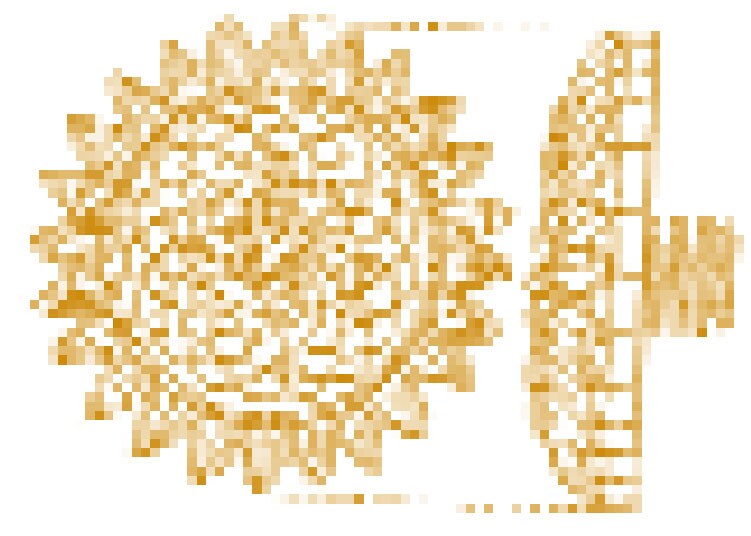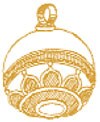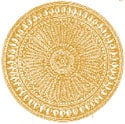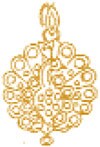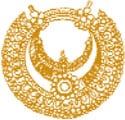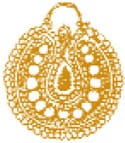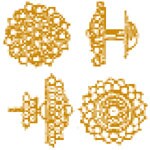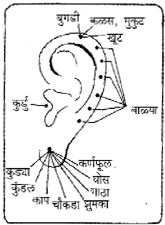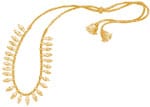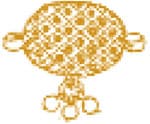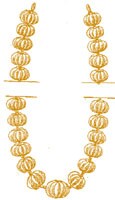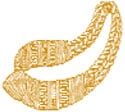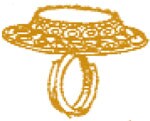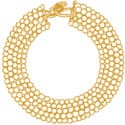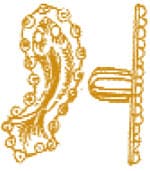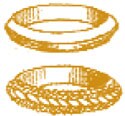आधुनिक भाषाओं में संस्कृत का योगदान - Contributions of Sanskrit to Modern Languages
संस्कृत, जिसे अक्सर "सभी भाषाओं की जननी" के रूप में सम्मानित किया जाता है, भाषाई इतिहास के इतिहास में एक गहरा स्थान रखती है। पी.एन. ओक के 'विश्व वैदिक विरासत' के अनुसार, संस्कृत न केवल पहली भाषा थी बल्कि मानवता को प्रदान की गई एक दिव्य रचना थी, जो बाद की पीढ़ियों में सभी भाषाई अभिव्यक्तियों की नींव बनाती है। आधुनिक भाषाओं में इसका योगदान दूरगामी है और वैश्विक संचार के विकास को समझने के लिए अभिन्न है।
संस्कृत की सबसे सम्मोहक विशेषताओं में से एक इसकी पूर्ण व्याकरणिक संरचना है, जो ऋषि पाणिनि द्वारा स्थापित की गई है। उनके कार्य, "अष्टाध्यायी," को सबसे प्रारंभिक और सबसे व्यापक व्याकरण मार्गदर्शिका माना जाता है, जिसने आधुनिक भाषाई अध्ययनों में भी बेजोड़ सटीकता के साथ ध्वन्यात्मकता, रूपिम विज्ञान और वाक्यविन्यास को नियंत्रित करने वाले नियम निर्धारित किए। जैसा कि पी.एन. ओक का दावा है, पाणिनि के व्याकरण के सिद्धांतों ने अन्य भाषाओं को संरचित करने के लिए एक खाके के रूप में कार्य किया और यूरोप और एशिया में भाषाई ढाँचों को महत्वपूर्ण रूप से प्रभावित किया।
भारत-यूरोपीय भाषा परिवार, जिसमें ग्रीक, लैटिन, जर्मन, फ्रेंच, अंग्रेजी और फ़ारसी शामिल हैं, संस्कृत की जड़ों के पर्याप्त प्रमाण प्रस्तुत करता है। व्युत्पत्ति संबंधी विश्लेषण इन भाषाओं के शब्दों और उनकी संस्कृत उत्पत्ति के बीच उल्लेखनीय समानताएँ प्रकट करता है। उदाहरण के लिए, अंग्रेजी शब्द "मदर" "मातृ" से, "ब्रदर" "भ्रातृ" से और "ज्यामिति" "ज्यामिति" (पृथ्वी के मापन के लिए संस्कृत) से लिया गया है। इस तरह की समानताएँ ओक के इस दावे को रेखांकित करती हैं कि संस्कृत ने एक सार्वभौमिक भाषाई परंपरा के जनक के रूप में कार्य किया।
केवल शब्दावली से परे, संस्कृत का प्रभाव ध्वन्यात्मकता और साहित्यिक परंपराओं तक फैला हुआ है। इसकी सटीक अभिव्यक्ति और संरचित ध्वनियों ने कई भाषाओं की ध्वन्यात्मक प्रणालियों को सूचित किया है। स्वनिमों का अध्ययन, जो भाषा के विकास के लिए महत्वपूर्ण है, वैदिक ग्रंथों में अपनी सबसे प्रारंभिक अभिव्यक्ति पाता है। ध्वनि की इस वैज्ञानिक समझ ने न केवल प्राचीन भाषाई क्षमताओं को बढ़ाया बल्कि आधुनिक ध्वन्यात्मक अध्ययनों की नींव भी रखी।
साहित्य के क्षेत्र में, संस्कृत के व्यापक और समृद्ध कार्यों ने महाद्वीपों में शैलियों और कहानी कहने की परंपराओं को प्रेरित किया। महाकाव्य रामायण और महाभारत ने विश्व स्तर पर कथाओं को प्रभावित किया, ग्रीक महाकाव्यों, फ़ारसी लोककथाओं और यहां तक कि पश्चिमी परियों की कहानियों में भी विविधताएँ देखी गईं। पी.एन. ओक इस बात पर ध्यान आकर्षित करते हैं कि कैसे ये कालातीत कथाएँ सार्वभौमिक मानवीय अनुभव को दर्शाती हैं, जिससे संस्कृत विश्व स्तर पर साहित्यिक संस्कृतियों के निर्माण में एक आधारशिला बन जाती है।
संस्कृत का प्रभाव वैज्ञानिक शब्दावली तक भी पहुँचता है। जैसा कि ओक ने उल्लेख किया है, आधुनिक भौतिकी, गणित और खगोल विज्ञान के शब्दों के संस्कृत से सीधे संबंध हैं। "योग" (मिलन), "माया" (भ्रम) और "धर्म" (नैतिकता या कर्तव्य) जैसे शब्दों ने भाषाई बाधाओं को पार कर लिया है, जो उनके गहन दार्शनिक निहितार्थों में वैश्विक प्रतिध्वनि पाते हैं। संस्कृत-आधारित वैज्ञानिक अवधारणाओं को अपनाया और अनुकूलित किया गया, जिससे कई उन्नत विषयों के लिए वैदिक मूल के ओक के दावे को और बल मिला।
संस्कृत की सार्वभौमिक पहुँच में गिरावट का श्रेय ऐतिहासिक विजय और सांस्कृतिक दमन को दिया जाता है। हालाँकि, इसका सार क्षेत्रीय और वैश्विक भाषाओं में अंतर्निहित है। ओक के अनुसार, यह अमिट उपस्थिति संस्कृत की कालातीत प्रासंगिकता को साबित करती है, न केवल एक भाषा के रूप में बल्कि सार्वभौमिक ज्ञान की एक प्रणाली के रूप में।
निष्कर्ष में, आधुनिक भाषाओं में संस्कृत का योगदान व्युत्पत्ति संबंधी जड़ों से कहीं आगे तक फैला हुआ है। इसने भाषाई, साहित्यिक और वैज्ञानिक परंपराओं को आकार दिया, मानव विचार और संचार के लिए एक सार्वभौमिक ढांचा प्रदान किया। जैसा कि पी.एन. ओक जोर देते हैं, इस विरासत को पहचानना न केवल अतीत को समझने के लिए बल्कि उन नींवों को समझने के लिए भी आवश्यक है जिन पर आधुनिक ज्ञान टिका हुआ है।
Sanskrit, often revered as the “mother of all languages,” holds a profound place in the annals of linguistic history. According to P.N. Oak’s World Vedic Heritage, Sanskrit was not just the first language but a divine construct bestowed upon humanity, forming the foundation for all linguistic expressions in subsequent generations. Its contributions to modern languages are far-reaching and integral to understanding the evolution of global communication.
One of Sanskrit’s most compelling attributes is its perfect grammatical structure, established by the sage Panini. His work, the “Ashtadhyayi,” is considered the earliest and most comprehensive grammar guide, which laid down rules governing phonetics, morphology, and syntax with precision unmatched even in modern linguistic studies. As P.N. Oak asserts, Panini’s principles of grammar served as a blueprint for structuring other languages and significantly influenced linguistic frameworks in Europe and Asia.
The Indo-European language family, which includes Greek, Latin, German, French, English, and Persian, bears substantial evidence of Sanskrit’s roots. Etymological analysis reveals striking similarities between words in these languages and their Sanskrit origins. For instance, the English word “mother” derives from “Matar,” “brother” from “Bhratar,” and “geometry” from “Gyaamiti” (Sanskrit for measurement of the earth). Such parallels underscore Oak’s claim that Sanskrit served as the progenitor of a universal linguistic tradition.
Beyond mere vocabulary, Sanskrit’s influence extends to phonetics and literary traditions. Its precise articulation and structured sounds have informed the phonetic systems of many languages. The study of phonemes, critical to language development, finds its earliest articulation in the Vedic texts. This scientific understanding of sound not only enhanced ancient linguistic capabilities but also laid the groundwork for modern phonological studies.
In the realm of literature, Sanskrit’s extensive and rich body of work inspired genres and storytelling traditions across continents. The epics Ramayana and Mahabharata influenced narratives globally, with variations seen in Greek epics, Persian folklore, and even Western fairy tales. P.N. Oak draws attention to how these timeless narratives showcase the universal human experience, making Sanskrit a cornerstone in the creation of literary cultures worldwide.
Sanskrit’s influence also reaches into scientific terminologies. As Oak notes, terms in modern physics, mathematics, and astronomy have direct links to Sanskrit. Words like “yoga” (union), “maya” (illusion), and “dharma” (ethics or duty) have transcended linguistic barriers, finding global resonance in their profound philosophical implications. Sanskrit-based scientific concepts were adopted and adapted, further strengthening Oak’s assertion of a Vedic origin for many advanced disciplines.
The decline of Sanskrit’s universal reach is attributed to historical conquests and cultural suppression. However, its essence persists, embedded within regional and global languages. According to Oak, this indelible presence proves the timeless relevance of Sanskrit, not merely as a language but as a system of universal knowledge.
In conclusion, Sanskrit’s contributions to modern languages extend far beyond etymological roots. It shaped linguistic, literary, and scientific traditions, providing a universal framework for human thought and communication. As P.N. Oak emphasizes, recognizing this heritage is essential for understanding not only the past but also the foundations upon which modern knowledge rests.
Collected Words:
Mother → Matar
Brother → Bhratar
Geometry → Gyaamiti
Chain → Shrinkhala
Sportsman → Spardhaman
All → Al
Lazy → Alasi
Lice → Luka
Brow → Bhru
Sweat → Swead
Plead → Raseeda
Supreme → Suparam
Genesis → Janma
Stable/Table → Sth+bal
Thief → Sthien
Home → Dhame
Gland → Granthi
Interior/Enter/Intercourse → Anter/Kosh
Lazy → Alasi
Wicked → Wickat
Entrepreneur → Enter-prerit-nar
Urge → Oorja
Soup → Soupkar
Month/Menses → Maasik
Spectacles → Spashta-karas
Cruel → Cruer
Camel → Cramel
Curriculum → Gurukulam
Heart → Hrt
Vitality/Vitamin → Jivit
Yogurt → Yogurtan
Snake/Sneak → Surp
Anger → Angar
Speech → Vachas
Character → Charitryam
Maximum → Mahatam
Truth → Ruth
Spy → Pashya
Hefty → Hesty
Money → Mana
Rupee → Raupyam
Solidify → Mritapraya
Purify → Jalapraya
Sinister → Su-nich-ster

















